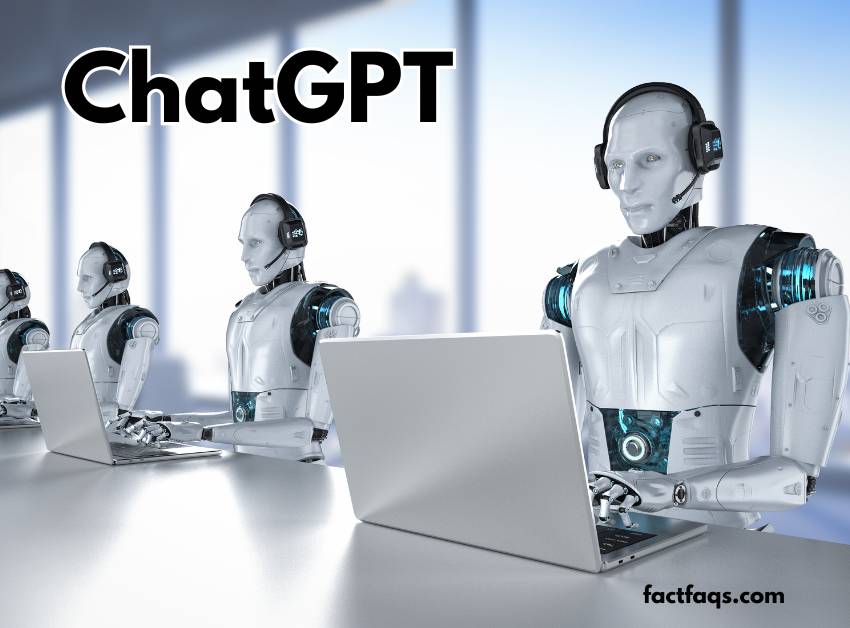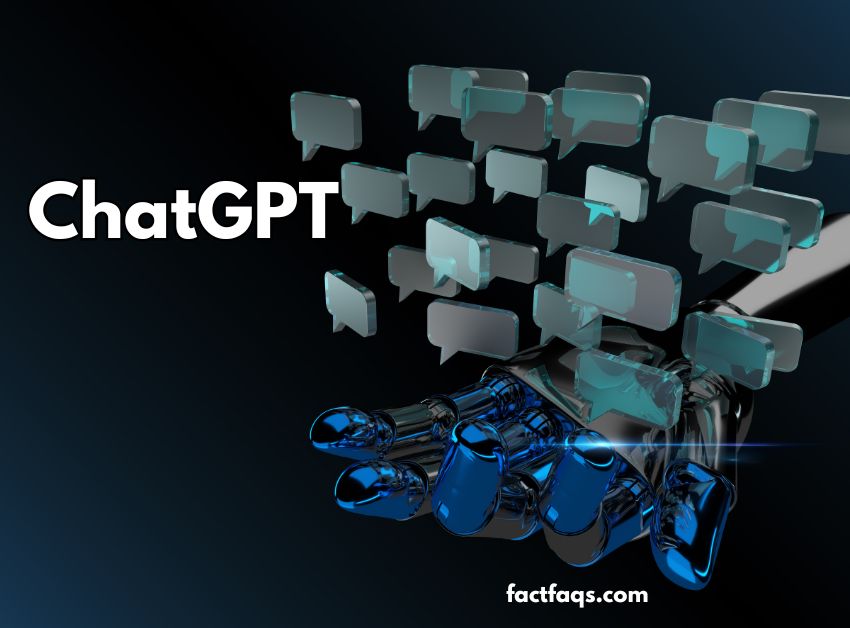ChatGPT is an AI language model developed by OpenAI, designed to assist users with a variety of tasks through conversation. Its capabilities include answering questions, generating text, and engaging in dialogue.
In the realm of artificial intelligence, ChatGPT stands out as a transformative tool, harnessing the power of machine learning to revolutionize human-computer interaction. Created by OpenAI, it’s a sophisticated model that can emulate human-like conversations, providing valuable assistance across various domains.
From solving complex queries to crafting detailed responses, ChatGPT’s flexibility and adaptability make it an indispensable asset in today’s digital landscape. Its design not only facilitates user-friendly experiences but also promotes efficient, real-time problem-solving. With an ever-expanding scope of knowledge, ChatGPT is poised to remain at the forefront of AI innovations, driving progress in numerous fields and making technology more accessible to the public at large.

Introduction To Chatgpt
ChatGPT represents the next step in the evolution of chatbots, utilizing AI language models to simulate human-like conversations. Unlike traditional chatbots that rely on pre-defined rules, ChatGPT is powered by the latest advancements in natural language processing (NLP). It understands and generates human language through a process known as machine learning.
As an AI language model, ChatGPT is designed to learn from a vast array of textual data, enabling it to understand the context and intricacies within a conversation. This enhanced capability allows ChatGPT to provide more accurate, coherent, and contextually relevant responses, setting a new standard for human-chatbot interaction.
| Feature | Traditional Chatbots | ChatGPT |
|---|---|---|
| Processing | Rule-based | Machine learning |
| Language Understanding | Basic | Advanced NLP |
| Interaction | Pre-defined responses | Contextual conversation |
How Chatgpt Is Changing The Game
ChatGPT’s integration of advanced natural language processing (NLP) has revolutionized how machines understand and respond to human queries. The impact on customer service is significant, with ChatGPT providing accurate and contextually relevant answers, reducing wait times, and improving overall user satisfaction.
With its human-like interaction capabilities, it can mimic nuanced conversation, making interactions more pleasant and natural. This has broad applicability in different industries, such as healthcare for patient engagement, in education to support learning, or in e-commerce to enhance shopping experiences. Businesses across sectors are leveraging this technology to deliver better service and create more engaging user interfaces.
Chatgpt In Action: Real-world Applications

ChatGPT stands at the forefront of a revolution in education, tailoring learning to individual student needs and enabling a more interactive educational experience. Its ability to understand and generate human-like text transforms how educational materials are created and consumed.
Content creation sees a transformation through ChatGPT, as it assists writers in generating original content, brainstorming ideas, and overcoming writer’s block. This technology is becoming an invaluable tool for digital marketers and content strategists alike.
Improving the function of personal assistants, ChatGPT offers a more nuanced and context-aware level of interaction. It assists in creating responses that are closely aligned with human conversation patterns, making virtual assistant experiences seamlessly practical and personalized.
For coding and development, ChatGPT is a game-changer, providing real-time coding assistance, debugging, and algorithm generation. Developers find it an indispensable resource for streamlining work processes and enhancing productivity.
The Benefits And Challenges Of Chatgpt
ChatGPT significantly enhances user accessibility to a wealth of information and services. Its ability to process natural language queries in real time ensures that diverse user groups can effortlessly interact with technology, regardless of their background. Moreover, it greatly improves operational efficiency for businesses, given its capabilities in handling large volumes of customer inquiries without human intervention, leading to faster response times and improved user satisfaction.
There are, nonetheless, important ethical considerations to address. The deployment of AI-driven chatbots like ChatGPT must align with moral standards and social norms to prevent potential misuse in spreading misinformation or biased interactions. Entities must ensure they follow ethical guidelines and maintain transparency in their operations.
Data privacy and security are paramount concerns in the age of AI-enhanced communication platforms. Rigorous measures to protect sensitive user data from unauthorized access and breaches are critical, as is compliance with global data protection regulations. The imperative to safeguard user privacy cannot be overstated in the digital realm.
To fully harness the potential of ChatGPT, one must overcome certain limitations and misconceptions. Educating users about the technology’s capabilities and boundaries helps in setting realistic expectations and promotes more meaningful interactions. It’s crucial to continue refining the technology, to better discern nuances and intricacies in human communication, thus minimizing misunderstandings and increasing overall effectiveness.
The Future Of Digital Interactions With Chatgpt
ChatGPT’s integration with Augmented and Virtual Reality is poised to revolutionize user experiences. Imagine placing virtual assistants in a three-dimensional space, where interactions are not limited to text or speech. This amalgamation will lead to incredibly immersive environments for education, training, and entertainment, with ChatGPT guiding, teaching, or even entertaining users in a more lifelike manner.
In the realm of the Internet of Things (IoT), ChatGPT’s role is becoming increasingly significant. Smart devices can leverage its capabilities for better communication, automated problem-solving, and streamlined operations. This synergy between AI and IoT technologies will likely lead to smarter homes, efficient energy management, and enhanced security systems, all orchestrated by intuitive conversational interfaces.
The long-term impacts on employment and skill sets demand attention, as AI like ChatGPT automates routine tasks. People will need to adapt, focusing on jobs that require complex decision-making, emotional intelligence, and creative skills that AI cannot easily replicate. The emphasis will shift towards roles where human insight is irreplaceable, leading to a reevaluation of education systems and vocational training for future workforces.
Concerning ongoing research and development, continuous investments in refining and advancing ChatGPT technologies ensure they remain at the forefront of AI progress. As natural language processing improves, we can anticipate a future where digital interactions are nearly indistinguishable from human ones, with breakthroughs in understanding context, managing ambiguity, and exhibiting cultural awareness.
Conclusion: The Potential And Promise Of Chatgpt
The evolution of ChatGPT advancements has been impressive, with each iteration unlocking new capabilities and enhancing user experience. Artificial intelligence has matured to a point where digital communication is more intuitive and human-like than ever before. ChatGPT’s sophisticated algorithms learn from vast amounts of data, leading to more meaningful and contextually relevant interactions.
ChatGPT revolution is not just about technological prowess; it’s about the seamless integration of AI into our daily lives. Businesses and consumers alike are recognizing the power behind efficient AI-driven communication, creating a ripple effect across various industries. The potential for ChatGPT to reshape digital interaction is immense, making it an exciting journey to anticipate and embrace.
As we stand on the verge of a new era, digital communication will continue to evolve. ChatGPT is at the helm of this evolution, steering us toward a future where conversations with AI are indistinguishable from talking to another human being. The road ahead is filled with breakthroughs that will undoubtedly transform our social and professional digital interactions.
Frequently Asked Questions On Chatgot
What Is A Chatgot?
A Chatgot, commonly known as a chatbot, is a software application designed to simulate conversation with human users. They’re often used in customer service to quickly respond to inquiries and provide assistance without the need for a live human agent.
How Does A Chatgot Function?
Chatbots operate by using pre-programmed responses, machine learning, or a combination of both, to interact with users. They are programmed to understand and respond to queries, often through natural language processing, providing relevant information or actions based on the input they receive.
What Are The Benefits Of Using Chatgots?
Chatgots offer 24/7 availability, and instant responses, and can handle multiple inquiries simultaneously, improving efficiency in customer support. They reduce wait times for customers and can lead to cost savings for businesses by automating repetitive tasks.
Can Chatgots Understand Human Emotions?
Advanced chatgots use natural language understanding and sentiment analysis to detect emotions in text, allowing them to respond appropriately. However, their emotional intelligence is limited compared to that of a human.
Conclusion
Exploring the realm of chatbots opens doors to endless possibilities. They streamline communication, enhance customer service, and boost efficiency. Embracing this technology positions businesses at the forefront of innovation. As we advance, chatbots are not just a trend; they are the future of interactive engagement.
Stay curious, stay ahead.
{ “@context”: “https://schema.org”, “@type”: “FAQPage”, “mainEntity”: [ { “@type”: “Question”, “name”: “What is a Chatgot?”, “acceptedAnswer”: { “@type”: “Answer”, “text”: “A Chatgot, commonly known as a chatbot, is a software application designed to simulate conversation with human users. They’re often used in customer service to quickly respond to inquiries and provide assistance without the need for a live human agent.” } } , { “@type”: “Question”, “name”: “How does a Chatgot function?”, “acceptedAnswer”: { “@type”: “Answer”, “text”: “Chatgots operate by using pre-programmed responses, machine learning, or a combination of both, to interact with users. They are programmed to understand and respond to queries, often through natural language processing, providing relevant information or actions based on the input they receive.” } } , { “@type”: “Question”, “name”: “What are the benefits of using Chatgots?”, “acceptedAnswer”: { “@type”: “Answer”, “text”: “Chatgots offer 24/7 availability, instant responses, and can handle multiple inquiries simultaneously, improving efficiency in customer support. They reduce wait times for customers and can lead to cost savings for businesses by automating repetitive tasks.” } } , { “@type”: “Question”, “name”: “Can Chatgots understand human emotions?”, “acceptedAnswer”: { “@type”: “Answer”, “text”: “Advanced chatgots use natural language understanding and sentiment analysis to detect emotions in text, allowing them to respond appropriately. However, their emotional intelligence is limited compared to that of a human.” } } ] }